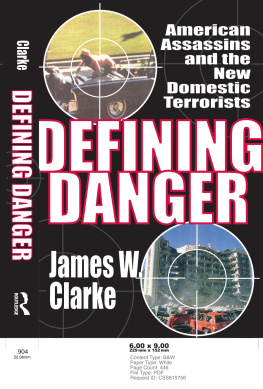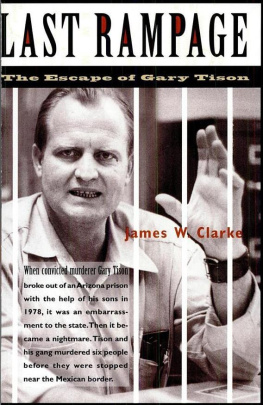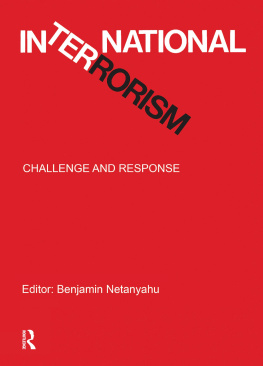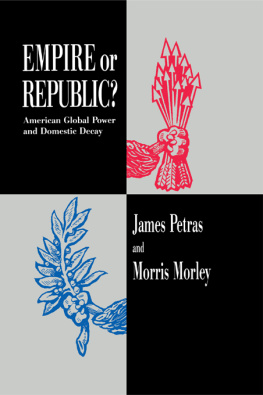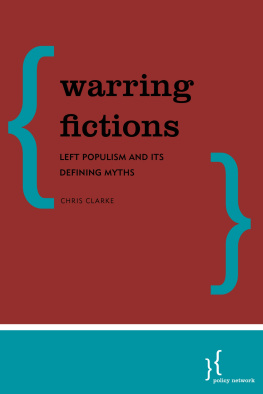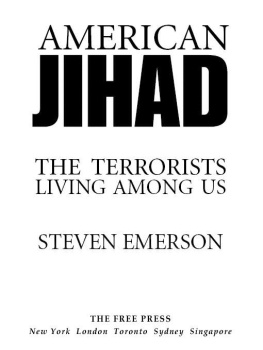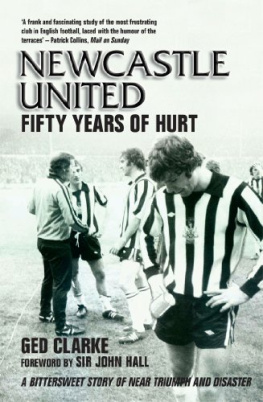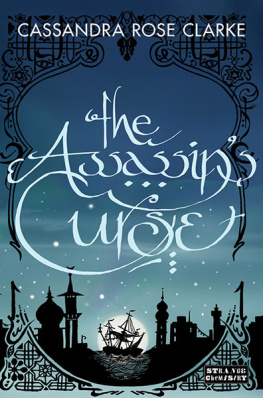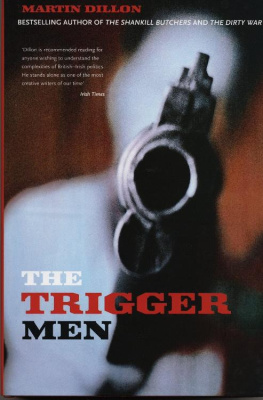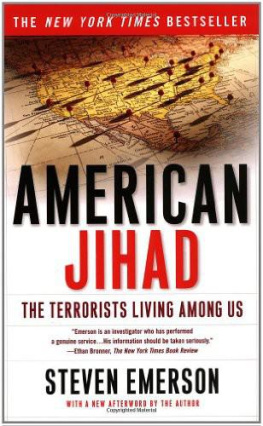Defining Danger
Defining Danger
American Assassins and the New Domestic Terrorists
James W. Clarke
Originally published in 2006 by Transaction Publishers.
Published 2017 by Routledge
2 Park Square, Milton Park, Abingdon, Oxon OX14 4RN
711 Third Avenue, New York, NY 10017, USA
Routledge is an imprint of the Taylor & Francis Group, an informa business
New material this edition copyright 2012 by Taylor & Francis.
All rights reserved. No part of this book may be reprinted or reproduced or utilised in any form or by any electronic, mechanical, or other means, now known or hereafter invented, including photocopying and recording, or in any information storage or retrieval system, without permission in writing from the publishers.
Notice:
Product or corporate names may be trademarks or registered trademarks, and are used only for identification and explanation without intent to infringe.
Library of Congress Catalog Number: 2011030475
Library of Congress Cataloging-in-Publication Data
Clarke, James W., 1937-
Defining danger : American assassins and the new domestic terrorists / James W. Clarke ; with a new epilogue by the author.
p. cm.
Includes bibliographical references and index.
ISBN 978-1-4128-4590-8
1. Assassins--United States--Biography. 2. Assassination--United States.
3. Terrorists--United States--Biography. 4. Domestic terrorism--United States. I. Title.
HV6285.C53 2012
364.1524092273--dc23
2011030475
ISBN 13: 978-1-4128-4590-8 (pbk)
ISBN 13: 978-0-7658-0341-2 (hbk)
For
Betty, Don, Mary and Steve
Contents
Books by James W. Clarke
American Assassins:
The Darker Side of Politics
Last Rampage:
The Escape of Gary Tison
On Being Mad or Merely Angry:
John W. Hinckley, Jr. and Other Dangerous People
The Lineaments of Wrath:
Race, Violent Crime, and American Culture
Defining Danger:
American Assassins and the New Domestic Terrorists
I first became interested in the subject of assassination in 1968 in the wake of the assassinations of Martin Luther King, Jr. and Robert Kennedy. Since then I have spent a good part of my academic career researching, lecturing, and writing about that subject. Along the way, I am grateful to a number of people who helped, but let me emphasize, bear no responsibility for any mistakes and the conclusions, which are mine alone.
The British Journal of Political Science led the way in publishing this research, which many considered controversial in the early 1980s, because it challenged conventional wisdom on the subject. I remain indebted to Ivor Crewe who, as editor, published the first article on the now accepted general typology of assassins and would-be assassins. For the same reasons, I also remain indebted to Sandy Thatcher, former director of Princeton University Press, which published my first two books on the subject: American Assassins: The Darker Side of Politics (1982), and On Being Mad or Merely Angry: John W. Hinckley, Jr. and Other Dangerous People (1990).
I was fortunate to attract the attention of the U.S. Secret Service. Ken Baker, former agent and director of research at that time, gave me the opportunity to lecture, discuss, and exchange insights on the subject with him and others at Secret Service headquarters in Washington. On one of those trips I began to research John Hinckleys attempted assassination of President Reagan. Roger Adelman and Dick Chapman, of the U.S. Attorneys Office in Washington, were most helpful to my gaining access to the voluminous transcripts and documents associated with that landmark case.
As my research continued after Hinckley, Captain Seth Lucente, U.S. Army Special Forces and former student at the University of Arizona, helped me research President Clintons would-be assassin, Francisco Martin Duran. The paper we wrote was published, again, in the British Journal of Political Science, thanks to the sterling editorial judgment of Albert Weale. Seth also assisted on the Timothy McVeigh case, providing important insights from a soldiers perspective. Another University of Arizona student, Courtney Hartstein, wrote an interesting paper on Ted Kaczynski, the so-called Unabomber, which I found useful in developing my own thoughts about that case. In the course of my research on Kaczynski, I spent a rewarding afternoon in Lincoln, Montana, talking with Sherri Wood. Mrs. Wood probably knew this strange, interesting man better than anyone outside his family.
As I began to put this book together, the College of Social and Behavioral Sciences at the University of Arizona kindly approved a Research Professorship for a semester, during which a portion of this work was done. Vickie Healey and Pat Rhyner, of the Department of Political Science, deserve many thanks for all their help and the time they saved me in organizing the vast amount of documentation that went into this project.
Once again, it is an honor and pleasure to have this work published under the editorial direction of Irving Louis Horowitz and Mary E. Curtis of Transaction Publishers. As always, I am grateful to my wife, Jeanne Nienaber Clarke, who patiently watched and listened as this project evolved, and never once doubted that it was important to do.
It was March 30, 1981 and President Ronald Reagan had just completed a speech he had given to thirty-five hundred AFL-CIO delegates who were meeting in Washington at the Hilton Hotel on Connecticut Avenue. Moments later as the applause receded there was a stirring in the lobby as the president emerged from the ballroom surrounded by his aides and Secret Service detail. They walked briskly through the lobby and outside to the limousine waiting at the curb.
On the sidewalk cameramen and reporters jostled spectators and one another to get closer to the president. Press, press, a reporter said as he tried to elbow his way toward the Secret Service agents who marked the presidents exit route. No way, a fair-haired young man replied stubbornly, we were here first.
Moments later that same young man aimed a .22 caliber pistol at the president. Six shots exploded in less than three seconds, fired from a crouched position, pistol held professionally with both hands, moving methodically right to left as he tracked the presidents movement toward the waiting limousine. Secret Service agents reacted instantly, pushing through the crowd to pounce on the shooter who was already in a bystanders grasp, and then wrenching the weapon from his hands and forcing him to the ground.
As the first shots exploded, Secret Service agent Tim McCarthy leaped between the president and the source of the gunfire, arms spread wide, providing a human shield. Suddenly he stiffened, then dropped as the fourth bullet caught him in the stomach. In another swift movement, agent Jerry Parr, who was walking at Reagans side, grabbed the startled presidents shoulders and forced him down behind the armored rear door of the limousine only milliseconds before Hinckleys fifth bullet smashed into its bulletproof window. The shot was well aimed. Without the window the bullet would probably have struck the left side of the presidents head.


